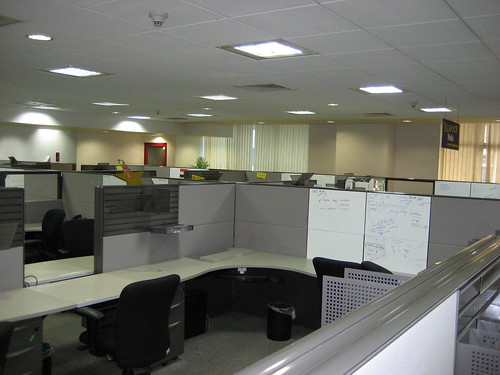Guest post by Todd Rhoad
Background
According to Charles Grantham and James Ware, executive producers of Work Design Collaborative LLC, an estimate of 12% of the working population serves their organization as part of a distributed workforce. This estimate is expected to grow to 40% by 2012. This trend ushers in the changing face of corporate America. Companies no longer need to have a facility that workers shuffle in and out of everyday to accomplish their work. We are a knowledge-based service industry now. With the advancements in information and communication technology, organizations are reducing the cost of building and maintaining workspace by creating a ‘flexible’ work environment for employees. This includes flex time, telecommuting, and several others. This new face of business is known as the Virtual Organization (VO).

Example
DELL computer company in Austin, Texas, has taken this a step further and outsourced much of their work overseas to countries like China, Malaysia and Ireland. DELL also taps into local companies and satellites offices to aid in the production of its computers. Either way, they are able to tap into talent that isn’t in Austin, TX. This distributed group of talent ensures they can make the best product and deliver it at the best price while reducing the cost of operations. Other companies, such as Cisco, are following suit. The huge savings in operations is driving the trend to go VO.
So what does this mean for the rest of us?
It means the competition pool has just exponentially grown in size.
Employees from around the world will be competing with us for that next job and they won’t even have to leave the house to get it.As current VOs achieve and share their success, more organizations will follow.In traditional organizations, potential new hires don’t have the issue of competing head to head with those outside the US. This is because the company doesn’t usually move its operations around.In the VO, this isn’t the case.VOs move operations to other regions to reduce cost (e.g. reduce taxes, lower labor rates).
There is no job security
As the VOs follow the savings by “picking up and moving,” employees will turnover at much faster rates. Companies will see an increase in new hires and employees will see an increase in the jobs held in their career. New hires will also have to seek jobs they are clearly qualified for; that is to say, they’ve worked in that position or industry before. VOs won’t invest in training new employees and will seek the best skills for the job. The task of finding the right people will be left to companies local to the new location of the company facility. This will render the job unreachable by many US applicants as the local firms will favor local people.
VOs usher in new challenges to new hires. Employees face the ever-mobile company that will hire the best talent wherever it may be. When its local talent they need, outsourced firms will hire their own. Shorter jobs, more competition and local favor are becoming the flavor of the day.
—–
Todd Rhoad is an author and speaker specializing in Career Development Strategies. He is the author of “Blitz the Ladder” and another soon to be released book “Virtual Organizations: 75 Things Your Career Should Know” and speaks frequently at colleges, businesses, conferences, and organizational associations. Todd is the managing director of BT Consulting and holds both a MSEE and MBA.












